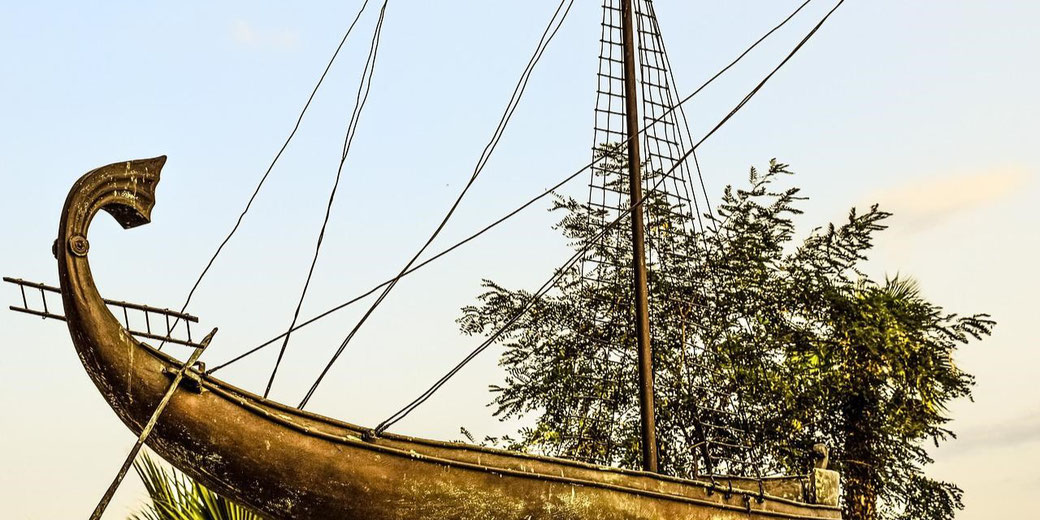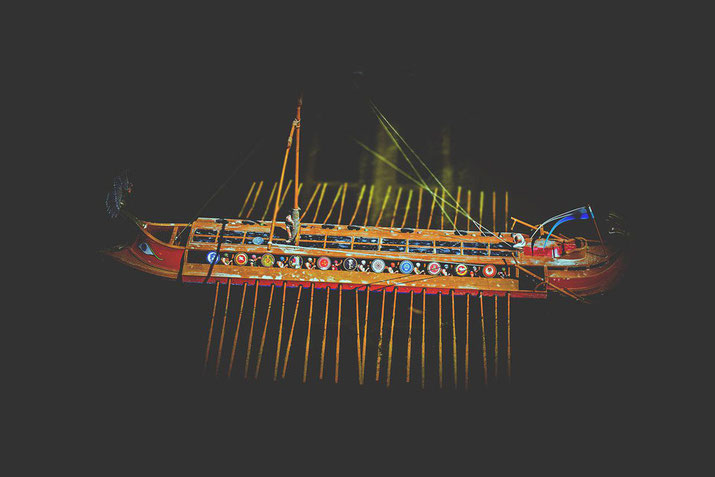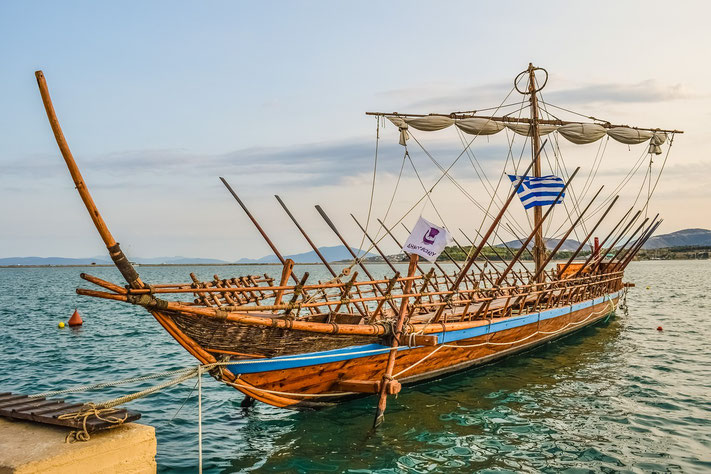How did the Greeks win the Battle of Salamis?

The Battle of Salamis was a naval battle that took place in September, 480 BC. It was fought between the Greek city-states and the Persian Empire.
The Persians were led by King Xerxes I, while the Greeks were led by Eurybiades.
The battle was a decisive victory for the Greeks, and it slowed the Persian conquest of Greece.
Background
The Battle of Salamis took place during the Second Persian Invasion of Greece. This invasion was led by Xerxes I, who became the king of Persia in 486 BC.
Xerxes was the son of Darius I, who had previously conquered much of the Middle East, Egypt and Asia Minor.
However, Darius' forces were defeated by the Greeks at the Battle of Marathon in 490 BC. This victory inspired Xerxes to seek revenge against the Greeks.
In 480 BC, Xerxes began his invasion by first fighting the Greeks at Thermopylae. Across three days of battle, the Spartans and other Greek city-states held back the Persian army.
However, the Greeks were eventually defeated when a local villager betrayed them and showed the Persians a hidden path behind their lines.
The remaining Greeks were forced to retreat, and Xerxes continued his march towards Athens.
Over the course of about six days, the Athenians, under the leadership of Themistocles, had evacuated the populace of the city to the nearby island of Salamis.
This left the city defended by a small contingent of soldiers. Xerxes' army easily defeated the defenders, captured Athens and burned it to the ground.
Battle preparations
The Battle of Salamis took place in the narrow straits between Salamis Island and the coast of Attica.
Xerxes was confident that he would win, and so he decided to watch the battle from a golden throne on a hill overlooking the straits.
The Persian fleet numbered about 1000 ships, while the Greek fleet only had 370 ships.
Despite this, Themistocles convinced the other Greek leaders that they could still win if they fought in the narrow straits.
He instructed the Greeks to lure the Persian ships into the narrow straits, where they would be at a disadvantage.
This would prevent the Persians from using their superior numbers to their advantage.
The Persian fleet also had a number of disadvantages, since it was made up of men from many different nations.
This meant that they were not used to working together, and they did not have a common language.
In contrast, the Greek fleet was made up of men who share a common language and culture. This meant that they could communicate much more easily.
Greek triremes
The Greek ships were called triremes, and they were faster and more manoeuvrable than the Persian ships.
The main offensive weapon on a trireme was the ram. This was a large metal-tipped beam that projected from the front of the ship.
The goal was to use the ram to puncture enemy ships and sink them.
Each trireme could carry around 200 men, and they were crewed by oarsmen, sailors and marines.
The oarsmen sat on three levels of benches, and they rowed the ship. The sailors managed the sails, while the marines fought on deck.
When a trireme struck an enemy ship, the soldiers and marines would board the enemy ship and fight the crew.
This was called hand-to-hand combat, and it was very brutal.
However, triremes had some key weaknesses. They were slow to turn and required a high degree of training of their crews in order to work well.
Finally, they were vulnerable to sinking in rough weather, as waves could enter oar-ports, subsequently flooding and sinking the ship.
The battle
The exact details of the battle are hard to reconstruct from the surviving sources, as they each focus on different events at various times during the day.
This was the nature of warfare throughout history: individuals only observed a limited area of the conflict.
The following summary of the battle provides a probable reconstruction.
The day before the battle, two Ionian Greek ships that had agreed to fight for the Persians deserted and went over to the Greek side.
This helped the Greeks better understand the Persian positions, but they were still severely outnumbered.
Themistocles sent a message through a personal slave to Xerxes, telling him that the Greeks were going to flee overnight and that he should pursue them.
Xerxes took the bait, and he ordered one of the strongest elements of his fleet, the Egyptians, to sail south around Salamis to the western exit of the straights and position themselves in front of the channel to block any ships from escaping.
However, the rumoured escape never happened, and the Persian sailors were tired from a sleepless night.
At some stage during the night, or in the early hours of the morning, Xerxes ordered the ships from his Ionian and Phoenician allies to sail into the Salamis Straits to pursue, what he believed, were the fleeing Greek ships.
In the morning, Themistocles ordered the Greek fleet to sail out of Salamis harbor and form up in line ahead.
Rather than watching the Greeks fleeing to the west, as had been expected, the Persians saw them lining up in attack formations.
After some last-minute repositioning of ships, the Greeks launched their attack.
Tired and caught off guard, the Persian navy started the battle in a vulnerable position.
The larger size of the Persian force limited their ability to move and, as various ships became immobalised or damaged, they became trapped in an increasingly cramped space.
With more room to manoeuvre, the Greek ships moved quickly to attack and ram their enemies.
The Persians became 'sitting ducks' and a crushing defeat became a real possibility.
Xerxes watched the battle from a nearby hill, and he was so horrified by what he saw that he ordered a retreat.
As the Persian ships tried to retreat, they became further entangled with each other.
This made them even easier targets for the Greeks, who picked them off one by one. By afternoon, Greek victory was certain.
Aftermath
The Battle of Salamis had significant consequences for both sides. For the Persians, it was a humiliating defeat.
For the Greeks, it was a major victory that boosted morale and inspired them to fight on against the Persians.
Themistocles was hailed as a hero, and he was able to lead the Athenians back to their city.
Xerxes, on the other hand, was so dismayed by his defeat that he personally returned to his capital city of Susa in Persia.
The Persian navy retreated to the island of Samos, in Asia Minor, where they began repairing their ships and preparing for the next stage of the war.
However, despite the loss, Xerxes' army remained undefeated on land. The Persian king left the Persian army under the command of Mardonius.
As winter set in, Mardonius camped his forces in Thessaly and relied upon Greek cities who had allied with the Persians to feed and supply his army in preparation for a new attack in the springtime.
Further reading
What do you need help with?
Download ready-to-use digital learning resources
Copyright © History Skills 2014-2024.
Contact via email
With the exception of links to external sites, some historical sources and extracts from specific publications, all content on this website is copyrighted by History Skills. This content may not be copied, republished or redistributed without written permission from the website creator. Please use the Contact page to obtain relevant permission.







